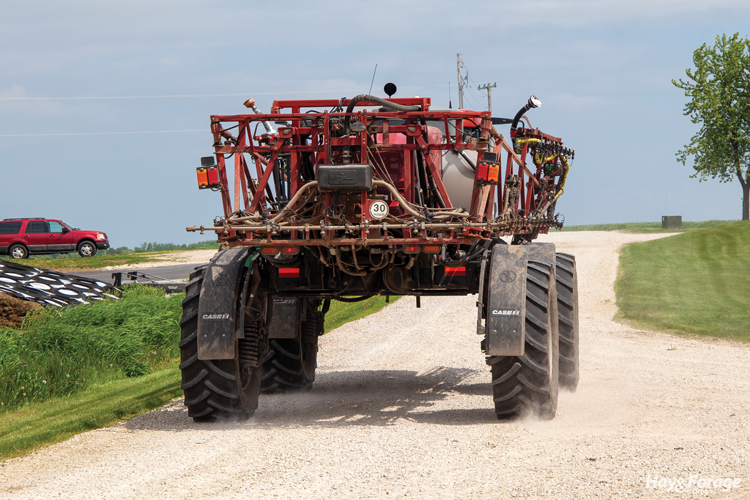
Weeds seem to persist regardless of the current or extreme weather situation. The primary tool to help control weeds on most farms is a sprayer. These days, sprayer models can fit any budget or farm size, and with many used sprayers hitting the market this year, it may be a good time to think about upgrading your current unit. Sprayers can vary in price from $1,000 to $400,000. They range from pull types to self-propelled and from boomless to over 120 feet of boom width. Let’s break them down and see which one or two would work best on your operation.
Boomless models are handy for any-sized farming operation and useful for spraying ditches, fencerows, and along tree lines where weeds can escape sprayers with booms. I personally have a boomless to spray around my corrals, as a wand-type takes too long. The downside to a boomless is the small tank and lighter duty pumps and components.
A good small-farm option
For the smaller operations, three-point sprayers are still the most versatile and affordable. With all the new spray tips available, you can get great coverage using only 10 to 12 gallons per acre with a 400 gallon, three-point hitch sprayer. However, care must be taken when spraying fertilizer and other micronutrients, as they tend to require higher application rates and are corrosive on sprayer parts. Also, with the close proximity to the tractor, you need to be vigilant when cleaning up after applying corrosive fertilizers so you don’t damage your tractor. If you heed these few cautions, any three-point hitch model can be a big asset to a smaller-sized farming operation.
The models that have been the hardest hit in terms of resale value are pull-type sprayers. With the flood of new self-propelled sprayers, many farmers have traded in their pull-type to upgrade to a self-contained unit. Pull-type sprayers can have all of the benefits of their self-propelled big brothers. Some manufacturers produce pull-type units that have larger tanks and just as much boom width.
Any hay producer or livestock farmer could really benefit from the rate controllers, multi-tip spray nozzle bodies, and chemical educator, which can all be found on pull-type models but with less investment than a self-propelled. If you add a light bar or small guidance system, the pull-type unit becomes an inexpensive, accurate spray rig.
New generation, used pull-type models can be found from $5,000 to $50,000, depending on the boom width, tank size, and model. Pull-type units are the bargain of the sprayer market right now, and they can do everything you ask of them.
Bigger and better
The growing trend over the last 10 years has been toward larger, faster, and more accurate self-propelled sprayers. With units out there that can easily cover over 150 acres per hour, they have changed the spraying industry as a whole. These massive high-boy sprayers can have individual nozzle shutoff, see and spray technology, and work accurately at speeds of up to 20 miles per hour. This market segment has exploded in both the total number of units sold and the technology operating them, making it appealing to farmers to upgrade.
With resistant weeds and what seems like new fungi showing up every year in fields, the sprayer is one of the most important tools in a farmer’s shed. When looking at purchasing a sprayer, there are a number of options to consider. The boom and its integrity should be toward the top of your list, as well as the metering system and valve controls.
With the sheer number of used self-propelled sprayers on the market today, take your time and do your homework. Eventually, you will be able to find the right sprayer with all of the options that you need to make your operation more efficient. Whether you’re in the market for a 600-gallon sprayer with a 60-foot boom to spray a pasture or an 1,100-gallon sprayer with a 100-foot boom and section control to spray a couple thousand acres of alfalfa, the units are readily available. With older models that can be priced as low as $30,000 and larger sprayers costing over $400,000, it is important to know what you are looking for so as to not get something over your budget or need.
The time is right to start looking into upgrading your sprayer. Don’t be afraid to add guidance, section control, or improved rate controllers. Each of these features can pay for itself in the first year. They will make it easier on the operator, too. Safe spraying this summer!
This article appeared in the August/September 2024 issue of Hay & Forage Grower on page 30.
Not a subscriber?Click to get the print magazine.

